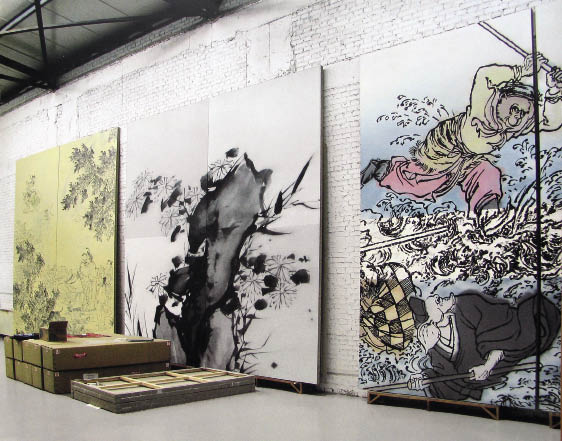He Sen:“Engagement” with Painting
Beginning his career as a professional artist in the early 1990s, He Sen’s style of painting morphed from expressionistic to neo-pop influenced, back to expressionistic, and finally to realistic which he applied to a commercially successful and often controversial series of portraits. In canvas after canvas, he illustrated essentially the same figure of a young Chinese woman in lingerie, sometimes holding a liquor bottle, sometimes a stuffed toy, usually with a cigarette in hand and always in a provocative pose. Countless interpretations of these paintings have been written (mostly in praise), relating the subject to the excesses of a younger generation of Chinese and to a hedonistic lifestyle the contemporary Chinese artists themselves were experiencing. He Sen prefers to say they only represent a period of experimentation with painting styles and perhaps a period of maturation he was going through. He adds, “They were about loneliness too.”
By 2009, Sen had matured and decided to reference his cultural history for subject matter. When I stepped into his spacious but minimal studio, it was filled with huge canvases depicting scenes from classical Chinese literature, specifically from the book Journey to the West, with stories of the rebellious Monkey King. Like illustrations from children’s books, He Sen’s paintings from this series are representational, but not realistic in coloration. Their monumental size gives them a presence illustrations could never have. They are busy in detail and He Sen plays with dividing the compositions into planes, some of which are colorized and some left black and white, turning them into studies about painting itself.

I felt what I was seeing were highly intelligent works and certainly not at all what I expected from the artist who had become so identified with his erotic, formulaic paintings produced over the previous decade. He had moved past his generation’s need to depict contemporary life. He Sen told me that he had entered into an “engagement” with painting and that he was striving to present new ways to consider traditional brush painting. In his piece Ma Yuan’s Twelve Images of Water, he created a triptych in order to show three different time frames of historical painting and additionally, he said it might relate to the theory of a parallel universe.
I left He Sen’s studio believing that he is as representative as anyone from his generation of artists who have survived a period of social and economic change that is quite unimaginable to Westerners. His generation first reveled in the sheer freedom of experimentation, then learned to use the market to assure themselves freedom to continue working. Twenty years into the process, they are finally able to get serious about studying art and move forward.
